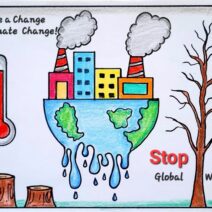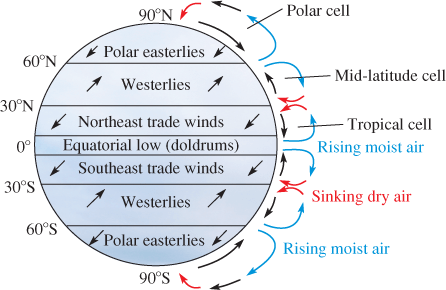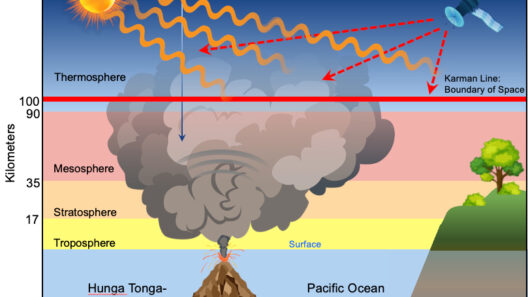Every year, as summer transitions into fall, coastal communities brace themselves for hurricane season. This period, filled with uncertainty and trepidation, evokes memories of past disasters that have left indelible scars on both the landscape and the psyche of affected populations. However, recent scientific advancements and data suggest this year’s storms might be unlike anything we have witnessed before. The pressing question on many minds is: is climate change to blame for hurricanes that exhibit unprecedented strength and frequency?
The relationship between climate change and extreme weather patterns, particularly hurricanes, has become a focal point of contemporary environmental discourse. Hurricanes are fueled by warm ocean waters, with their strength often measured by the Saffir-Simpson scale. Warmer ocean temperatures, a direct consequence of global warming, serve as a catalyst, energizing these powerful storms. As the planet heats, the overall frequency of hurricanes may not necessarily increase, but a notable uptick in intensity is evident.
Statistical analyses reveal a disconcerting trend: the most powerful hurricanes, categorized as Category 3 and above, are becoming more prevalent. Between 1980 and 2018, the frequency of these major storms surged alarmingly. A study published in the journal “Nature” highlighted this unsettling reality by documenting that hurricanes are reaching their peak intensity more rapidly compared to previous decades. This raises pertinent concerns about our preparedness and resilience in the face of natural disasters exacerbated by climate dynamics.
The mechanisms through which climate change amplifies hurricane activity are multifaceted. Increased atmospheric temperatures lead to heightened evaporation rates. When moisture-laden air rises, it cools, leading to precipitation. As this cycle accelerates with climate warming, storms can gather more moisture, resulting in unnaturally heavy rainfall and catastrophic flooding – a phenomenon starkly showcased during the devastating effects of Hurricane Harvey in 2017. In Houston, rainfall reached an extraordinary 60 inches in just a matter of days, causing widespread destruction.
Furthermore, warmer ocean waters not only intensify hurricane winds but also extend the hurricane season’s duration. Traditionally, hurricane activity peaks around late summer. However, as temperatures steadily rise, scientists are observing systems emerging earlier in the year and retaining their ferocity well into autumn. This poses urgent implications for coastal infrastructure, urban planning, and disaster management. Coastal dwellers must now prepare for a prolonged threat vector; this shift alters everything from insurance policies to emergency preparedness protocols.
Additionally, it is vital to acknowledge the role that sea level rise plays in hurricane dynamics. As polar ice melts and thermal expansion contributes to rising waters, coastal regions face increasing vulnerability during storm surges. The height at which storm tides reach is crucial, and with rising sea levels, more extensive coastal flooding becomes inevitable. This phenomenon can exacerbate damage incurred from high winds and heavy rainfall, resulting in catastrophic impacts on communities, ecosystems, and local economies.
Scientists emphasize that while climate change has not singularly caused hurricanes, it has certainly altered their behavior and potential destructive power. The discourse surrounding this topic often garners polarized opinions, with some arguing that natural variability alone accounts for recent hurricanes. However, this perspective dismisses the substantive evidence suggesting anthropogenic influence on climate systems. Each hurricane season, thus, becomes a litmus test for our accountability in addressing environmental degradation and climate resilience.
Historically, hurricanes such as Katrina and Sandy prompted significant dialogues around climate and social vulnerability. The socioeconomic disparities unveiled amidst these disasters showcased the harsh realities faced by marginalized populations. Those with fewer resources are often located in high-risk areas, ill-equipped to respond adequately to extreme weather events. The intersection of climate change with social justice highlights an urgent need for holistic approaches to disaster preparedness. Communities must not only demolish physical barriers to withstand hurricanes but must also fortify social infrastructure that provides support during such crises.
The potential forecast of “hurricane season on steroids” illuminates the necessity for immediate action. Various adaptation and mitigation strategies are being explored globally. For instance, the integration of green infrastructure into urban planning enhances cities’ ability to absorb stormwater while reducing heat islands. In addition, reforestation initiatives and coastal restoration projects can serve dual purposes: curtailing carbon emissions and providing natural barriers against storms.
Moreover, international collaboration will be essential in addressing the climate crisis. Policymakers, scientists, and citizens must unite in fostering sustainable practices and innovative solutions that aim to reduce greenhouse gas emissions. Global treaties, such as the Paris Agreement, emphasize the imperative to curtail emissions to limit global warming. By keeping the conversation alive and pushing for ambitious action, societies can work towards mitigating the devastating impacts of hurricanes fueled by climate change.
The narrative surrounding hurricanes and climate change must not be one of despair but one of resilient adaptation, proactive policy-making, and community engagement. Emphasizing research and developing robust climate education programs will empower individuals to understand these threats and contribute to the collective effort to combat them. Awareness and knowledge-building can shift public perception, turning anxiety into action as citizens advocate for sustainable practices that protect lives, property, and the environment.
As the hurricane season approaches each year, it remains a reminder of nature’s might and humanity’s vulnerability. However, with the looming realities of climate change, there should also be a recognition of our collective responsibility to forge a pathway toward resilience. To merely observe will exacerbate the cycle of destruction; instead, proactive engagement can bring about the change necessary to protect coastal communities and ecosystems from the wrath of increasingly volatile storms.



